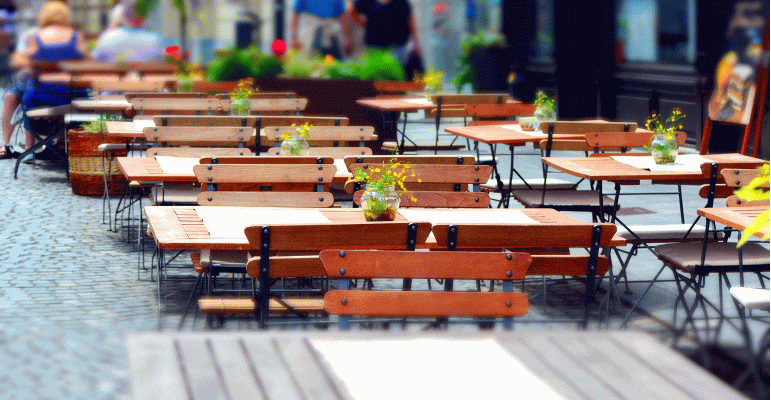
MillerPulse down for 10 of past 11 months, traffic falls 3.5 percent:
Restaurant sales fell again in April, according to the latest MillerPulse index, and experts are puzzled as to the full reasons for the decline.
Same-store sales declined by 0.9 percent during the month, and 0.5 percent on a two-year basis.
It was the 10th monthly decline in the past 11 months for the index, and the largest decline in the two-year number since the recession.
The decline is due entirely to a loss of customers. Traffic in the month fell by 3.5 percent. Traffic has fallen by 1.9 percent or worse in each of the past 12 months, and has been down by at least 2.7 percent in each of the past five months.
Miller has been among those who believe that the widening gap in prices at restaurants and grocery stores are to blame. Restaurants increased prices by 2.3 percent in April, according to federal data, while grocers’ lowered their prices by 0.8 percent.
Yet grocery store sales aren’t exactly going gangbusters, either. Grocery sales increased just 1.9 percent in April — while restaurant sales increased 3.9 percent, according to federal retail sales data.
Other economic figures should suggest an industry in growth mode. Unemployment is 4.4 percent, essentially full employment, and disposable income is trending higher. More disposable income typically translates into higher restaurant sales.
Consumer confidence, meanwhile, remains at strong levels after increasing earlier this year, according to The Conference Board.
In other words, consumers have money and jobs and are confident in the state of their finances — and yet they’re not dining out.
“All the traditional correlations we look at, the things that make sense, they’re all breaking down,” Miller said.
One potential suggestion is that consumers are opting for more independent restaurants. But data on that theory is mixed, at best. And Miller, for one, doesn’t believe that’s the case.
“We’ve found no convincing evidence on our part that chains are losing share,” Miller said.
Another theory is that the industry has overbuilt. And there is some evidence that restaurants have been adding locations and expanding at a strong clip over the past three years, which might have outpaced demand and led to the declines in same-store sales.
Miller said that restaurants are not alone in their misery. Numerous consumer industries are struggling at the moment, in particular retail. “I think we’re having the same sort of issues that are out there more broadly in the economy,” Miller said. ‘The question is why.”
There is some belief that the industry could pick things up as the year goes on. Comparisons get easier this month and next month, and that could pull sales higher.
For now, however, sales and traffic remain troublesome. Traffic has been generally weak since 2012, but it has decelerated over the past two years.
And the traffic problems are broad based. Quick-service chains’ traffic in April fell by 3.3 percent. Casual-dining chains’ traffic fell by 3.7 percent.
Same-store sales at quick-service restaurants declined by 0.8 percent in April, while casual dining same-store sales fell by 1.1 percent.
Casual dining same-store sales have fallen in each of the past 13 months. On a two-year basis, casual dining same-store sales are down 1.2 percent. That’s the seventh straight monthly decline and second worst, after December’s 2.7 percent decline, since the recession.
